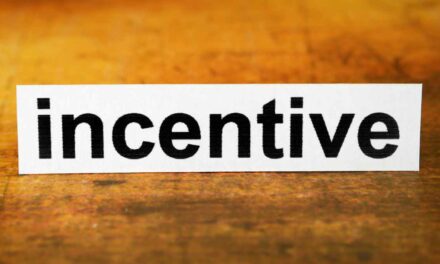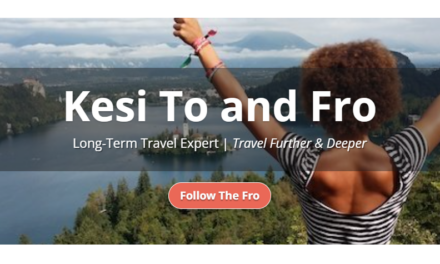You don’t just sit down and create content. At least, you shouldn’t. A successful content entrepreneur first creates a content plan. Based on your content tilt and mission statement, the content plan is the detailed map for developing and publishing your creations.
It encompasses your time, resources, topics, formats, frequencies, deadlines, and more. It will result in an editorial and production calendar, an easy-to-use template that helps your content creation and distribution stay on course.
Your content plan takes into consideration your time, resources, topics, formats, frequencies, deadlines, and more. #ContentBusiness #editorialcalendar #contentcreation Share on XIn developing a content plan, you always should keep two things top of mind: you and your audience.
Tilt Advice
Determine your dedicated time
The first step is to figure out how many hours per week you will commit to the content business. Be realistic. It’s better to underestimate than overestimate your time. You can always do more, but it’s far more problematic to do less if you overestimate your time.
Divvy your time among content creation, distribution, promotion, and general business activities. (You may readjust these percentages after you’re working for a while.)
Caveat: Don’t forget to allow time for promoting your content and marketing your business. The Tilt founder Joe Pulizzi recommends spending about 30% of your content time on promotion and distribution when you’re starting. “Create the one great content thing and work the partnerships, promotion, social, etc. Once you build an audience and have the distribution, you can focus more on creation.”
New content creators should spend about 30% of their content time on promotion and distribution, says @JoePulizzi. #contententrepreneur #creatoreconomy Share on XYou also should plan to spend some time on business operations.
Develop your content structure
Using your audience research, tilt, and mission statement, detail up to four primary content categories. These are your business overarching topics or areas of interest.
Caveat: If you expect your audience to find your content through search, your categories most likely should include your overarching keywords.
You also should pick your primary platform at this point. Most likely, this platform will dictate the preferred format(s) your creations will take. If your creation should fall within certain parameters in this format, include those details. For example, the targeted length of a blog post or the time range for videos.
Now, get more specific.
Break down the content creation and distribution task by task. For example, if you write a blog, the tasks might include interviewing, researching, writing, editing, proofing, and posting. If you do a video, it might cover scriptwriting, shooting, producing, proofing, and publishing.
Note which of these tasks will be performed by someone else, either on your team or through outsourcing.
Track preliminary content creation
Being your own boss may let you have a flexible schedule, but it doesn’t mean you don’t have to track your time. You can’t create a helpful editorial and production calendar if you don’t know how long you actually take to create and distribute your content.
Being your own boss doesn't mean you don't have to track your time, says @AnnGynn. #contententrepreneurs #creatoreconomy Share on XWe suggest creating several pieces of content to determine average completion times. You could use a free tracking tool like Toggl. Track each task needed to create each asset.
Helpful Resource: The Tilt’s Essential Content and Project Management Tools for Content Entrepreneurs
After you’ve created a few pieces of similar content, you should begin to see a similar pattern to come up with an average time it takes to produce it.
Plan your pace
Now that you understand how long each activity takes – and who else is involved in each step – you can determine your publishing frequency.
Then, work backward to establish deadlines for the creation process (yes, even if it’s only you.) And leave a little wiggle room for unexpected delays.
So, for example, let’s say you have determined to publish one weekly podcast episode that will go live every Wednesday. Here’s what the deadlines might look like for the Oct. 20:
- Oct 6: Secure interview subject.
- Oct. 13: Record interview, new intros, and outros.
- Oct. 14: Produce the episode, editing, interviewing, adding music, etc.
- Oct. 15: Submit completed audio file to transcription service.
- Oct. 19: Post completed episode with transcription to podcast platform.
- Oct. 20: Podcast episode goes live.
Joe Pulizzi and Robert Rose have a shorter content production timeline for their weekly podcast This Old Marketing, which will debut its episode 292 this week:
- Oct. 4-6: Collect story ideas to discuss in episode.
- Oct. 7: Discuss show (15 minutes); record (60 minutes); production (45 minutes); deliver for uploading.
- Oct. 8: Episode goes live.
Create your editorial calendar
Now, you have all the necessary information – topics, format, frequency, deadlines – to create a content calendar. You can use one of the tools mentioned in our essential content and project management tools guide. Or you could simply create a spreadsheet using Google Sheets or Excel.
Here’s a basic starting point:

You can expand the columns to include a more detailed production calendar. You also could add your keywords, publishing URL, metrics, etc.
One more thing
Now that you have a documented content plan, you should find you’re better able to create and publish content consistently that your audience wants to consume. But it’s not a one-and-done task. Carve out time at least monthly to review how well the previous month’s content performed and update your content plan accordingly.
About the author
Ann regularly combines words and strategy for B2B, B2C, and nonprofits, continuing to live up to her high school nickname, Editor Ann. An IABC Communicator of the Year and founder of G Force Communication, Ann coaches and trains professionals in all things content. Connect with her on LinkedIn and Twitter.










